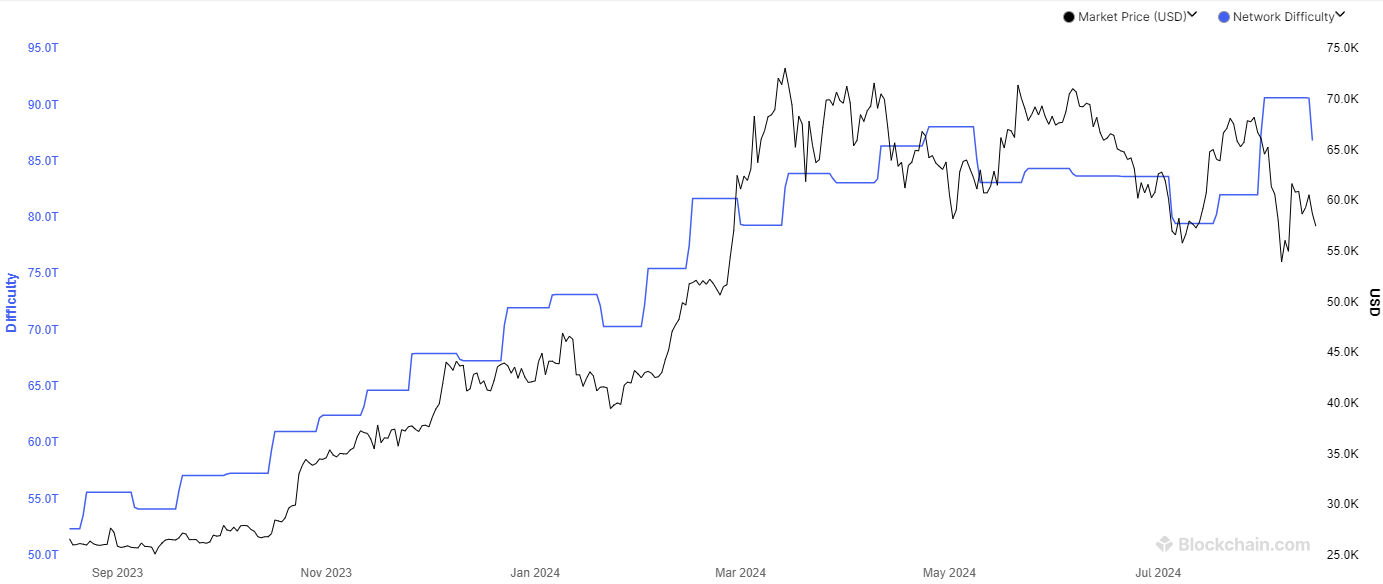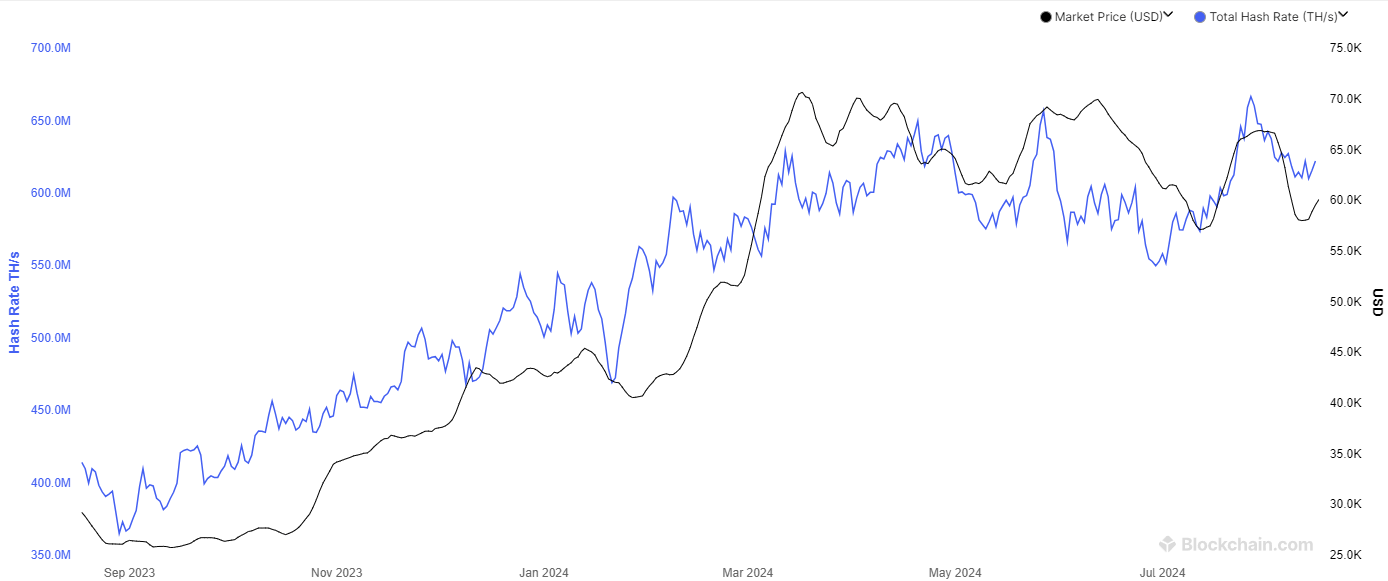On-chain data shows that Bitcoin mining difficulty decreased by more than 4% during the latest network adjustment.
Bitcoin Mining Difficulty Has Gone Down In The Latest Adjustment
The “mining difficulty” metric tracks how hard the miners would find it to mine blocks on the Bitcoin network. The BTC blockchain goes through an automatic adjustment about every two weeks, where this indicator’s value changes.
To know whether this change would be positive or negative, the purpose of the difficulty needs to be understood first. In short, the difficulty exists as a measure to control the asset’s inflation.
The only way to increase the BTC supply is by mining new blocks and receiving a block subsidy in return. The block subsidy has a fixed value, so the only variable related to the cryptocurrency’s supply growth is the rate at which the miners are hashing new blocks.
Thus, if the asset’s inflation is to be controlled, this rate needs to be constrained. Satoshi, the coin’s creator, recognized this and came up with the difficulty as a solution.
When miners increase their total computing power (known as the hashrate), they naturally become faster at the mining process and hence, receive block subsidy at a faster pace.
This is not something the BTC network wants, though, so it increases its difficulty as a measure of slowing the miners back down just enough to be in line with the desired speed, which is a block every ten minutes.
Naturally, when miners lose hashrate, the difficulty drops, so the miners can continue to process blocks at the usual pace even with the lower computing power.
In fact, it would appear that this latter type of change occurred during the latest adjustment, as the chart below suggests.
The data for the BTC mining difficulty over the past year | Source: Blockchain.com
During this latest downward adjustment, the BTC network’s difficulty has decreased by over 4%. The graph shows that the adjustment before this one was a sharp positive change, suggesting that the chain had been reacting to the miners becoming significantly faster at their task.
The 7-day average mining hashrate chart would confirm this, as its value had shot up to a new all-time high (ATH) before this difficulty increased.
Looks like the value of the metric has been on the way down in recent days | Source: Blockchain.com
A consequence of the difficulty is that when new miners join the Bitcoin network, the revenue share of all miners involved gets smaller since the block subsidy remains the same as before the new miners came in.
The large difficulty spike earlier had naturally put miners under pressure, a factor behind the decline that the hashrate has seen since its ATH. With the difficulty of seeing a negative adjustment now, it’s possible that at least some miners would feel improved conditions.
BTC Price
At the time of writing, Bitcoin is trading at around $58,500, down more than 2% over the past week.
The price of the asset appears to have been consolidating recently | Source: BTCUSD on TradingView
Featured image from Dall-E, Blockchain.com, chart from TradingView.com
Source: https://bitcoinist.com/relief-for-bitcoin-miners-btc-difficulty-corrects-4/

